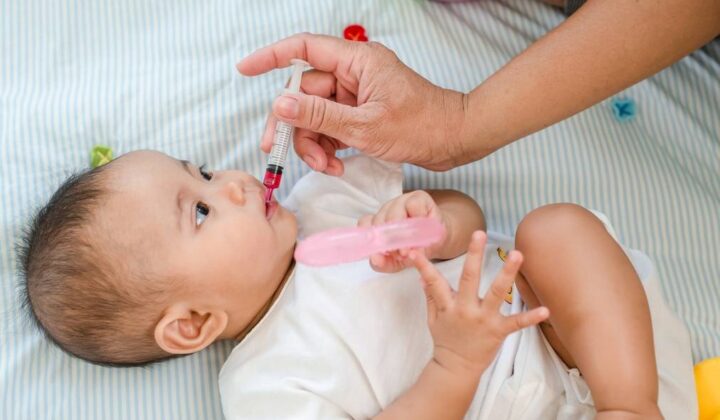
How to give antibiotics to children: Six recommendations from the pediatrician
One of the most serious problems facing current medicine is the great bacterial resistance produced by the irrational use of antibiotics.
Most of the infectious diseases in the world are caused by viruses of different types, and that have their cycle, therefore, they do not need antibiotics for their elimination, points out Dr. Gilberto Rosero Morla, a pediatrician in Guayaquil.
“Sometimes, these infections bring bacterial complications, and then antibiotic therapy is necessary.”
In countries like Ecuador, the lack of rigor in verifying that there is a medical prescription to sell this type of drug means that anyone acquires them and takes them for a simple flu or diarrhea, giving rise to bacterial resistance in the long term.
Dr. Rosero indicates that the ideal is to have medical criteria based on clinical examinations and experience to administer an antibiotic, at the correct dose and for the necessary time.
The doctor authorized to prescribe antibiotics to children is the pediatrician, who will give the family the guideline of doses and the time in which to administer them, adds Dr. Jaira Hidalgo Vásconez, a specialist at the Milenial Kids Pediatric Hospital, in Quito. She asks to take into account several factors:
Whenever you buy a drug, check the expiration time, make sure it is long. “Sometimes they could sell us drugs that are about to expire or even expired,” says Hidalgo. Once opened, these granules should not simply be “saved” for possible use in subsequent infections, warns the German pharmacist Gabriele Röscheisen-Pfeifer. “In all cases, the excess should be removed, especially since antibiotics should never be administered without consulting a doctor.”
Virtually all pediatric antibiotics, whether they come in liquid or powder, are subject to preparation. The packaging indicates how to dilute it. In the case of powders, they are mixed with purified or boiled bottled water, which has been completely cooled, not lukewarm. “Add the water up to the mark and stir until the product dissolves. This preparation can never be mixed with juice. “In any case, if the child does not tolerate the taste, she can give him a few sips of juice after the medicine,” explains Hidalgo.
Don’t top up the product with water again after each intake, either, because this increasingly dilutes the active substance, says Röscheisen-Pfeifer. And never supply the pure powder. “This has also been done by some parents,” warns the pharmacist.
Every time you go to give the medicine to the child, shake the liquid again, or you could be giving it a superficial content, because the product tends to settle at the bottom,” says Hidalgo.
Administration times are usually seven to ten to fourteen days, so keep the antibiotic refrigerated. If you leave it in the environment, after seven days you will have to replace the bottle, since sugars at room temperature promote bacterial growth. “Put them in the refrigerator door, in a box so that they do not come into contact with food, so they will last seven to ten days, without problems and without additional effects,” advises the pediatrician.
Limit yourself to the fraction of the medicine that the doctor gave you. The spoon that comes with the product lends itself to inaccuracy. Use a measuring syringe to give the exact dose of the antibiotic, “not approximate,” says Hidalgo, “because the doctor calculates the dose based on your child’s weight.”
Medication schedules can also be respected. They are usually given after the main meals. Taking antibiotics on an empty stomach can cause reactions such as nausea and vomiting.
90% of antibiotics do not interact with food, except in certain cases, in which the doctor will tell you what to do. Yes, there are some intolerances, which generally go hand in hand with the type of excipients used in the drug formula, and this has a lot to do with the brand of the product. For this reason, Hidalgo advises to continue with the brand that was prescribed, because your child may not tolerate the components of other presentations well.
Allergic events, on the other hand, present in the form of rashes and skin eruptions, beginning on the chest and abdomen and then gradually generalizing. “Very rarely are these allergies sudden or life-threatening. If you see rashes or pimples appear, go to a health center or your trusted doctor to find out if it is a reaction to the medication or part of the behavior of the underlying disease”, as the latter can be confused with an allergy.
Categories: General
